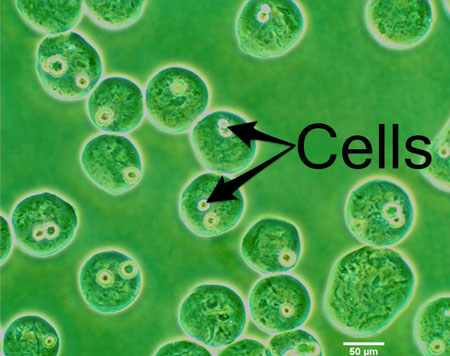| Jul 30, 2014 |
Exploring 3-D bioprinting to make organs for transplants
|
|
(Nanowerk News) Printing whole new organs for transplants sounds like something out of a sci-fi movie, but the real-life budding technology could one day make actual kidneys, livers, hearts and other organs for patients who desperately need them.
|
|
In the ACS journal Langmuir ("Study of Droplet Formation Process during Drop-on-Demand Inkjetting of Living Cell-Laden Bioink"), scientists are reporting new understanding about the dynamics of 3-D bioprinting that takes them a step closer to realizing their goal of making working tissues and organs on-demand.
|
 |
| A close-up of tiny bioink droplets used to print organs shows live cells inside. (Image: American Chemical Society)
|
|
Yong Huang and colleagues note that this idea of producing tissues and organs, or biofabricating, has the potential to address the shortage of organ donations. And biofabricated ones could even someday be made with a patient’s own cells, lowering the risk of rejection. Today, more than 120,000 people are on waiting lists for donated organs, with most needing kidney transplants. But between January and April of this year, just short of 10,000 people received the transplant they needed. There are a few different biofabricating methods, but inkjet printing has emerged as a frontrunner. It’s been used to print live cells, from hamster ovary cells to human fibroblasts, which are a common type of cell in the body. But no studies had been done to really understand how biological inks behave when they’re dispensed through printer nozzles. Huang’s team set out to fill that gap.
|
|
They tested bioinks with different concentrations of mouse fibroblasts plus a hydrogel made out of sodium alginate. They discovered, among other findings, that adding more cells in the material reduces both the droplet size and the rate at which it gets dispensed. The new results will help scientists move forward with this promising technology.
|

